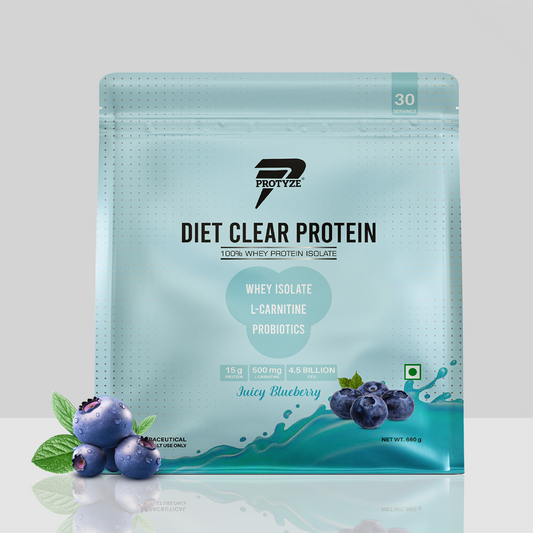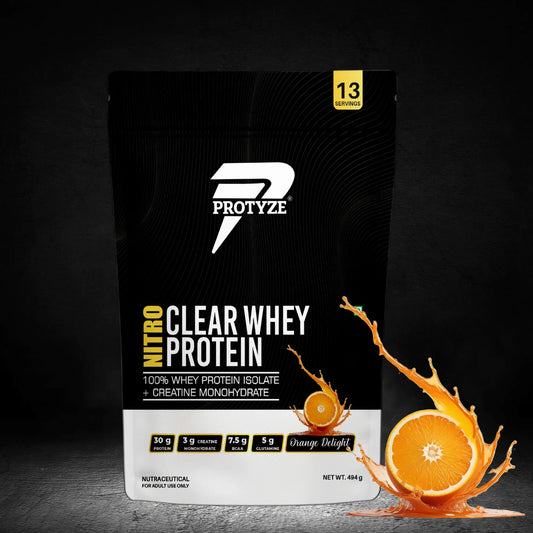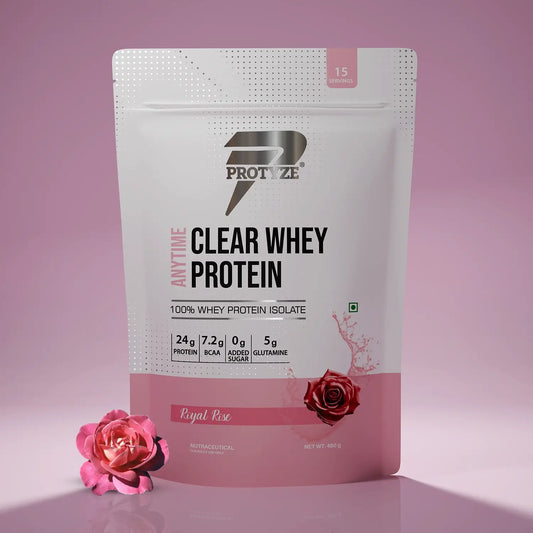Strength training and bodybuilding both involve lifting weights but differ in goals, methods, and outcomes. Strength training prioritizes force production, while bodybuilding focuses on muscle size and aesthetics. This blog compares the two across training, nutrition, programming, and results, integrating Protyze Nitro Clear Whey Protein (30g protein, 3g creatine) for recovery, as it aligns with your hypertrophy, supplement, and performance interests. Let’s optimize your training!
Defining Strength Training and Bodybuilding
Strength Training
- Goal: Maximize force production and functional strength for athletic performance or daily tasks.
- Focus: Enhance neuromuscular efficiency (muscle-nerve coordination) to lift heavier weights, per Journal of Strength and Conditioning Research (2018).
- Example: Powerlifters or athletes training for sports (e.g., sprinting).
Bodybuilding
- Goal: Optimize muscle size (hypertrophy) and aesthetics for a sculpted physique.
- Focus: Improve muscle definition, symmetry, and proportion through targeted exercises, per Journal of the International Society of Sports Nutrition (2017).
- Example: Competitors or enthusiasts chasing a chiseled look (e.g., pre-date pump).
Key Differences Between Strength Training and Bodybuilding
Here’s a comparison across training, nutrition, programming, and outcomes, with Protyze Nitro Clear Whey for recovery.
1. Training Focus
Strength Training
- Exercises: Compound lifts (e.g., squat, bench press, deadlift, upright row) emphasize multi-joint movements for maximum force, per Sports Medicine (2019).
- Reps/Sets: Low reps (1-6), high sets (4-6), heavy weights (80-95% 1RM) to stress the nervous system, per Journal of Strength and Conditioning Research (2018).
- Intensity: Prioritizes progressive overload (increasing weight) to boost strength.
- Example: Bench press 4x5 at 85% 1RM, rest 2-3 min.
Bodybuilding
- Exercises: Mix of compound (e.g., bench press) and isolation moves (e.g., dumbbell fly, leg curls) to target muscle size and shape.
- Reps/Sets: Moderate reps (8-12), 3-5 sets, moderate weights (60-75% 1RM) for time under tension, per Journal of Applied Physiology (2015).
- Intensity: Emphasizes muscle pump and fatigue, using drop sets or supersets.
- Example: Dumbbell fly 4x10 at 65% 1RM, rest 60s, focusing on pec stretch.
Role of Protyze Nitro Clear Whey
Both benefit from post-workout protein. Protyze Nitro Clear Whey (30g protein, 3g creatine, ~120 kcal) supports muscle repair and strength with its 99% lactose-free formula (Mango Delight, Orange Delight). Mix with water (not milk) post-workout, per Journal of the International Society of Sports Nutrition (2017).
2. Programming and Progression
Strength Training
- Structure: Linear or periodized programs (e.g., Starting Strength, 5/3/1) with long rest (2-5 min) for heavy sets.
- Progression: Increase weight (e.g., 5-10 lbs weekly) to improve 1RM, prioritizing form.
- Frequency: 3-5 days/week, targeting major lifts 1-2x weekly, with 48-72 hours recovery.
- Example: Week 1: Deadlift 5x5 at 300 lbs; Week 4: 5x5 at 320 lbs.
Bodybuilding
- Structure: Split routines (e.g., push/pull/legs, chest day) with shorter rest (30-90s) for pump and volume.
- Progression: Increase volume (reps/sets) or time under tension (e.g., slower tempos) for hypertrophy.
- Frequency: 4-6 days/week, hitting each muscle group 2x weekly for growth, per Sports Medicine (2019).
- Example: Chest day: Bench press 4x10, fly 3x12, push-ups 3x15.
Role of Protyze Nitro Clear Whey
Bodybuilding’s higher volume demands more protein synthesis. Protyze’s 30g protein fuels hypertrophy, while its 3g creatine boosts strength training performance.
3. Nutrition
Strength Training
- Calories: Slight surplus (100-300 kcal) or maintenance to fuel performance without excess fat.
- Protein: 0.7-0.8g/lb bodyweight (e.g., 140-160g for 200 lbs) for recovery, per Journal of the International Society of Sports Nutrition (2017).
- Carbs/Fats: Higher carbs (3-5g/lb) for energy; moderate fats (0.3-0.5g/lb) for hormones.
- Example: 200-lb lifter: 2,800-3,000 kcal, 140g protein, 400g carbs, 70g fat.
Bodybuilding
- Calories: Larger surplus (300-500 kcal) for bulking or deficit for cutting.
- Protein: 0.8-1g/lb bodyweight (e.g., 160-200g for 200 lbs) for hypertrophy, per Journal of Applied Physiology (2015).
- Carbs/Fats: Balanced carbs (2-4g/lb) and fats (0.3-0.4g/lb) to fuel workouts and control body fat.
- Example: 200-lb lifter (bulking): ~3,000-3,500 kcal, 180g protein, 350g carbs, 80g fat.
Role of Protyze Nitro Clear Whey
Protyze’s 30g protein and 3g creatine support both goals. Bodybuilders use it to hit higher protein targets, while strength trainers leverage creatine for ATP regeneration. Mix with water within 30 min post-workout.
4. Desired Outcomes
Strength Training
- Primary: Increased maximal strength (e.g., higher 1RM on bench press) and functional power.
- Secondary: Moderate muscle growth, denser physique.
- Appearance: Strong but not necessarily shredded; body fat 10-15%.
- Example: Powerlifter deadlifting 500 lbs with a stocky build.
Bodybuilding
- Primary: Maximized muscle size and aesthetic definition.
- Secondary: Moderate strength gains.
- Appearance: Lean, sculpted, low body fat (6-12%) for definition.
- Example: Bodybuilder with chiseled pecs and visible abs.
Role of Protyze Nitro Clear Whey
Protyze’s 30g protein aids muscle repair for both, while 3g creatine enhances strength gains and workout capacity, per Journal of Strength and Conditioning Research (2018).
Common Misconceptions
- Myth: Strength training doesn’t build muscle. Truth: It increases size, but less than bodybuilding due to lower volume, per Journal of Applied Physiology (2015).
- Myth: Bodybuilding makes you weak. Truth: It builds strength, but not as much as strength training, per Sports Medicine (2019).
- Myth: You can’t do both. Truth: Hybrid programs combine elements (e.g., strength 3x/week, hypertrophy 2x/week).
Integrating with Your Fitness Routine
Strength Training
- Program: Use a 5x5 program (e.g., bench press, squat) 3-4x/week, focusing on heavy compounds.
- Nutrition: Consume Protyze Nitro Clear Whey post-workout, paired with carbs (e.g., banana) for recovery. Aim for 0.7-0.8g/lb protein daily.
- Recovery: Rest 48-72 hours between heavy sessions, stretch, and sleep 7-9 hours, per Journal of Applied Physiology (2015).
Bodybuilding
- Program: Follow a push/pull/legs split 5-6x/week, mixing compounds and isolations (e.g., dumbbell fly, leg curls).
- Nutrition: Use Protyze Nitro Clear Whey post-workout to hit 0.8-1g/lb protein, maintain 300-500 kcal surplus.
- Recovery: Foam roll, stretch, and hydrate (16-20 oz water during workouts), per Journal of Sports Sciences (2018).
Conclusion
Strength training builds maximal strength and function through heavy, low-rep compounds, while bodybuilding maximizes muscle size and aesthetics with moderate-rep, high-volume routines. Strength trainers use slight calorie surpluses and lower protein (0.7-0.8g/lb), while bodybuilders need larger surpluses and higher protein (0.8-1g/lb). Protyze Nitro Clear Whey (30g protein, 3g creatine) supports both, fueling recovery and performance. Choose based on your goals—strength for power, bodybuilding for looks—or blend them for a hybrid approach. Ready to lift? Grab Protyze and hit the weights!
TL;DR
Strength training focuses on force (low reps, heavy weights, compounds), bodybuilding on size (moderate reps, mixed exercises, high volume). Strength needs 0.7-0.8g/lb protein, bodybuilding 0.8-1g/lb. Protyze Nitro Clear Whey (30g protein, 3g creatine) aids recovery for both. Pick strength for power, bodybuilding for aesthetics, or combine for both.





